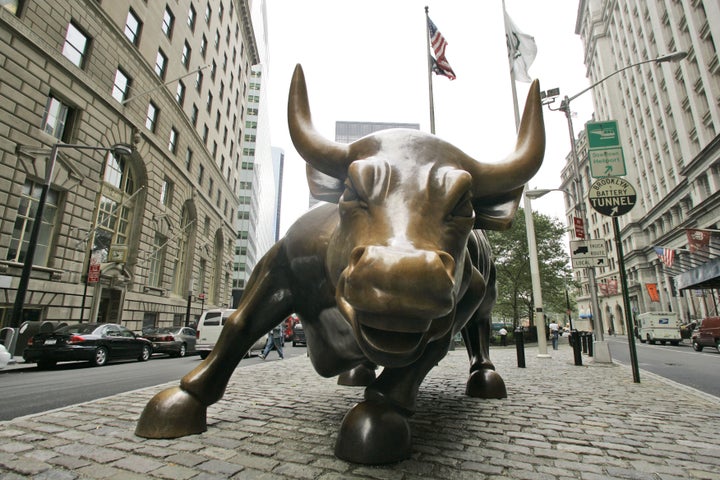
The giant credit rating agency Standard & Poor's issued a stark warning Tuesday to creditors of Citigroup and Bank of America, two firms that up until now had been considered "Too Big To Fail". The message: We're not so sure the U.S. government will bail them out again next time.
In the fall of 2008, the government ponied up $90 billion to rescue the two giant banks rather than risk the repercussions of their failure. Since then, the implicit guarantee that the government would backstop them has been hugely profitable to megabanks. For instance, they have been able to borrow money at cheaper rates because lending to them essentially carried no risk.
But now, Standard & Poor's is saying, the rules seem to be changing: "The outlook revision reflects our increased uncertainty about the U.S. government's willingness to provide additional extraordinary support to highly systemically important financial institutions in a way that benefits debt holders," the agency announced. "We previously stated our belief that the extraordinary support was temporary. We believe markets are beginning to stabilize and the U.S. government is seeking ways to reduce the potential for moral hazard and systemic risk associated with large financial institutions."
So more than a year after a reckless Wall Street nearly brought down the U.S. economy, it appears the Obama administration and Congress have persuaded at least one credit-rating agency that taxpayers won't be there to support megabanks next time they screw up.
With its short statement, S&P put the market on notice that TBTF banks will no longer be able to enjoy the fruits of their risk-taking without having to suffer the consequences when their bets go sour.
And the markets reacted accordingly. The cost of insuring the debt of Citigroup and Bank of America against restructuring or default rose 2.2 percent each Tuesday, according to CMA Datavision.
In the 2008 crash, employees of Bank of America and Citigroup were laid off en masse and shareholders took a hit on their equity investments -- but the firms' creditors escaped as the bailouts preserved the value of their debt.
Last December, the House of Representatives passed a bill with zero Republican votes to ensure something like that never happens again. In short, should there ever be a situation in which a TBTF firm requires taxpayer assistance, the firm's bondholders will also take a hit -- a significant change from the present situation.
"I'm pleased to see that they're taking our efforts seriously," said Rep. Brad Miller (D-N.C.), a member of the House Financial Services Committee. Miller helped push through an amendment calling for a firm's creditors to suffer losses should it need government assistance. S&P specifically mentioned that portion of the bill.
"I hope we've made it clear that we're not going to stand behind the big firms forever," Miller said.
S&P also pointed to the Obama administration's recent efforts to curb TBTF, most notably its push to recoup taxpayer losses on the TARP program by imposing a levy on the biggest financial firms based on their leverage.
"The subsequently proposed Financial Crisis Responsibility Fee, which would impose a significant cost burden on the largest banks, further underscores the extent to which the political climate may affect bond holders of these companies adversely," S&P said in its statement.
"The rationale that S&P provided here is on the money, particularly the phrase about 'seeking ways to reduce the potential for moral hazard and systemic risk associated with large financial institutions,'" said a senior administration official.
"S&P is taking the moral hazard issue more seriously. They think the government is going to take stronger steps to deal with too-big-to-fail institutions, and they therefore see more risk," said Douglas Elliott, a former investment banker and currently a fellow in economic studies at the Brookings Institution, a Washington think tank.
"The more we see things like the ratings agencies assuming that a too-big-to-fail institution could cause losses to creditors, the better it is," Elliott said. "If the Street is starting to read this as lending to these institutions is not completely safe, that's a great thing."
He added: "These banks are highly-levered institutions. If debt holders start to care about their safety, that will translate into how management acts."
TBTF status brings a huge benefit to megabanks because the market treat their debt as fully guaranteed by the U.S. government. It's a massive taxpayer-funded subsidy.
For example, in a September study, Dean Baker, co-director of the Center for Economic and Policy Research in Washington, D.C., and a colleague, calculated that since the failure of Lehman Brothers in September 2008 and the ensuing actions that enshrined TBTF, the 18 largest bank holding companies enjoyed significantly lower borrowing costs than smaller banks. He calculated the taxpayer-funded subsidy at $34.1 billion a year.
